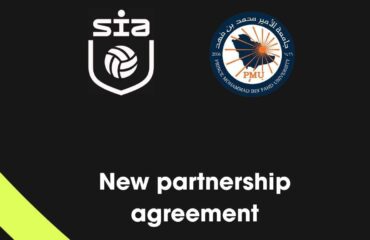Microcycle in the competitive season
Firstly
During the microcycle, the adjuvant general strength training consists of three sessions per week. A collective session with simple exercises looking for quality in the technical execution and efficiency normally made up of between twelve and eight posts carried out on one of the central days of the microcycle which can be in the field or in the gymnasium.
And the individual sessions have the objective of attending to the specific needs of each of the players, training everything mentioned above (asymmetries, deficits, mechanics, jumps, landings, struggles, etc.).

Collective and individual training UD SIA Beniganim.
Secondly
The activations depend on the type of work we are going to do during the main part. In my case, I always try to complement in the activation what is not going to happen in the main part. For example, on the day of playing relations with very wide spaces, we try to introduce a general activation with mobility and strength exercises with a passing wheel to introduce the player to the session on a technical-tactical level.
On the day of medium to wide spaces where distances are going to be covered at high intensity, we look for tasks with a more neuromuscular component in the activation. Similarly, in a session of duels in reduced spaces, the activation will be focused on high speed through a circuit. And finally, the day before the match, the activation will be focused on reaction speed or agility with or without the ball.

Thirdly
In terms of the main part of the session, there are all those open tasks proposed by the coaching staff focused on improving the game model. On the central day of the microcycle we look for situations of duels in reduced spaces carried out by two, three or four players per team where the conditional variable to be analysed is the number of accelerations and decelerations carried out by each player.
The day of medium-wide spaces would be composed of situations of five to seven players per team analysing the speed above 19.8 km/h (HSR) and 25.2km/h (VHSR). And lastly, the very wide spaces day with game tasks of new to eleven players per team we seek to analyse the distance travelled.

Competitive micro-cycle programming according to match day.
Processes of a player before training
Before the sessions our players have to fill in a wellness questionnaire (figure 8). Workload monitoring (TL) is one of the fundamental processes for optimising performance. Knowing the TL will allow us to assess fatigue, anticipate overloads and overtraining and thus minimise the risk of injury. In fact, there is a relationship between TL and injury incidence (Drew & Finch, 2016), which reflects the importance of measuring this factor.
The quantification of TL aims to analyse the adaptations produced by training and reduce the risk of possible side effects of training, such as non-functional overload and injury (Halson, 2014).

Monitoring of training load UD SIA Beniganim pre-training.
Data analysis
Once the data has been analysed, the trainer is only informed when a warning signal is raised, either by excess or by defect, so that he/she can determine whether a partial modification, such as acting as a joker in some tasks or removing him/her from them, is sufficient or whether a more specific follow-up is required. If the data is too low, perhaps it needs a little more encouragement and requires additional work at the end of the training.
The implementation of such tools has a number of limitations. For these questionnaires to be reliable, they require the player to internalise the different scores and be able to differentiate between them.

Examples of tasks
On Thursday of the second microcycle proposed in the previous image we started the session with a collective neuromuscular activation of preventive strength in the gym with a recognition lap and a training lap where we included ten exercises such as hip thrust (hip dominant), squat (knee dominant), unilateral traction or pushing exercises, core, etc.
Then, in the main part of the session on the field we performed three tasks in medium to wide spaces. Two related to the game model and led by the coach and assistant coach, and a final conditional one.
- TASK 1. Position game 7c7 + 3 jokers.

- TASK 2. Conditional match 9v9 + goalkeepers

- TASK 3. HIIT 6′ CONDITIONAL 60 metres (10 “W / 20 “R)

At the end of the training session, we upload the GPS data to the Polar Team Pro platform to obtain and analyse the most significant data from the session..
The Polar Team Pro web service provides training summaries, an overview of the entire team or a selected player, powerful session analysis and comparison functions, location of players on a heat map or line graph, graphical breakdowns of heart rate and speed zones and number of sprints during a session as well as long-term reports and data export.

Polar data team pro session explained in the previous section.
Conclusion
In conclusion, the construction of our weekly training model is based on knowledge of and respect for the basic principles of training and knowledge of the conditional requirements of the players and the sport. From here, we establish the individual requirements of our players trying to adapt the profile of the tasks to the structure of the microcycle and to the coach’s game model, managing the internal and external load of the team to optimise with maximum efficiency at the individual level of the player.






